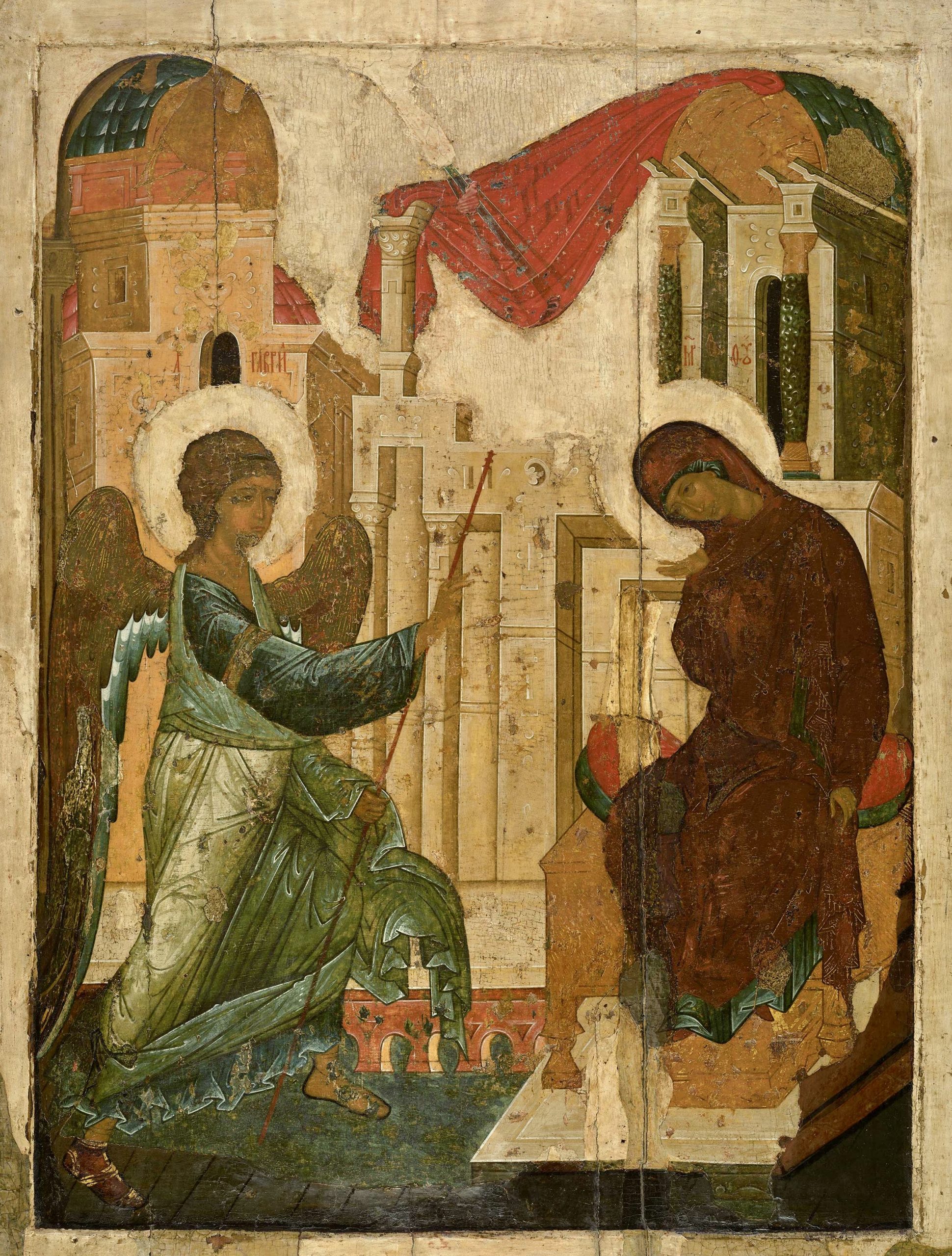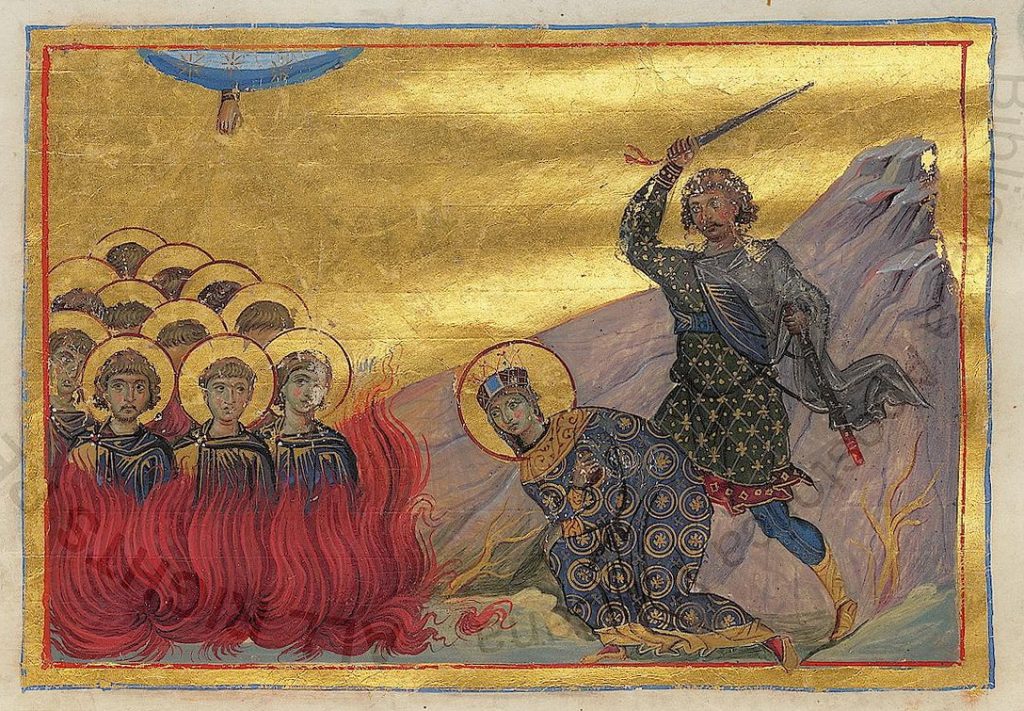 In the Name of the Father, and of the Son, and of the Holy Spirit.
In the Name of the Father, and of the Son, and of the Holy Spirit.
This tenth day of the Nativity Fast is blessed by the double celebration of two Great-Martyrs – St Catherine of Alexandria and St Mercurius – who both lived during the first age of martyrs, resisting the paganism of the Roman Empire with the light and truth of Christ.
As an aristocrat and the daughter of the Roman consul of Egypt St Catherine was a product of the learning and culture of Hellenic antiquity. Educated to the highest standards of the classical world, she mentally outstripped even the greatest philosophers engaged to debate with her, when she disgraced her father’s house by not only rejecting the most learned, desirable and richest suitors – including the Emperor Maximian himself – but by publicly declaring her Faith in Christ, her only suitor and bridegroom.
Given over to the authorities by her own father, St Catherine learned the brutal truth of the Lord’s words in today’s Gospel for the martyrs, “You will be betrayed even by parents and brothers, relatives and friends; and they will put some of you to death.”
Rejecting all of the temptations of marriage proposals and worldly comforts, defeating the “wisdom” of the pagan philosophers, her unshakeable, steadfast and immovable faith in Christ sealed her fate and the victory of Christ in the martyrdom following her placing her own head upon the executioners block.
St Mercurius, who lived a half century earlier, gained the reputation of being an outstanding, celebrated soldier, but this was not enough to protect him from the Roman laws against Christianity, after the emperors Decius and Valerian issued a law ordering all Roman citizens to worship the pagan gods and condemning Christians to death.
As yet unknown as a Christian, St Mercurius proved himself a great leader in the Roman war against the Barbarians, for which he was made a military commander by the Emperor, placing him in an ever more noticeable public position in Roman society.
Mercurius refused to participate in the mandated offering of sacrifices to the pagan gods, and was summoned before the emperor. But he was neither threatened nor daunted by this, and openly declared himself a Christian, throwing down his soldier’s belt and mantle at the emperor’s feet, repudiating his military honours and his place in Roman society.
For this rebellion, the Great-Martyr was stretched over fire and lacerated with knives. So great were the cuts and lashes to his body that the blood from his wounds extinguished the flames. Yet after each bout of tortures, when his tormentors threw him back into the prison close to death, the Lord granted Saint Mercurius complete healing.
These continued miracles showed the impious pagans not only God’s power, but also the power of the Great-Martyr’s faith in Christ.
Having been condemned to death, St Mercurius was granted a vision of the Lord, promising him a quick release from his sufferings, granted by his beheading at Cappadocian Caesarea, after which his body exuded myrrh which healed the sick.
How foolish and weak these great saints must have seemed to the Romans who mocked, tortured and martyred them… just the latest Christians consumed and seemingly destroyed by the death-machine of the pagan Roman Empire. Had the Romans kept statistics, they would have seen the sheer numbers of Christians martyrs as the evidence of the futility and uselessness of Christianity. Yet, the death of every martyr was another nail in the coffin of classical pagan civilisation, for every martyrdom was the victory of Christ over the earthly manifestation of the Kingdom of Satan.
In the same way the death of every new-martyr of the Soviet yoke brought the end of Communism and the collapse of the Iron Curtain closer. The blood of the martyrs was lethally poisonous to the Marxist system, just as that of the first martyrs was to paganism.
Every martyrdom and the passions and miracles that preceded the death of the saints not only manifested the power of Christ, but drew countless pagans into the net of His Gospel, confirming the words of the Gospel: “You will be brought before kings and rulers for My name’s sake. But it will turn out for you as an occasion for testimony.”
When St Catherine broke the torture-wheel, rather than being broken by it, the empress Augusta, the imperial courtier Porphyry and a vast number of soldiers confessed their faith in Christ, sealing their own martyric fate, and further hastening the crumbling demise of pagan Rome. The historian Lactantius declared that the blood of the martyrs is the seed of the Church, but the self-same blood was also deathly poison to paganism.
The Faith and courage of the martyrs awoke those imprisoned in the darkness of paganism, declaring what we have heard from St Paul’s letter to the Ephesians:
“Awake, you who sleep, Arise from the dead, And Christ will give you light.”
The courage, unshakeable faith and example of the martyrs must also call us to arise from our spiritual sleep and our worldly complacency.
Since the first age of martyrs, the Church has seen wave after wave of recrimination: from heretics, from Muslims, from Communists, from politicians.
In the 20th century and beyond, in the new age of martyrdom and renewed persecution for the faithful of the former Soviet block, the Balkans, the Christians of the Holy Land and Islamic regimes, believers quickly shared in the experience of the faithful of the Old Israel, described by St Paul in his letter to the Hebrews:
“There were others who were tortured, refusing to be released so that they might gain an even better resurrection. Some faced jeers and flogging, and even chains and imprisonment. They were put to death by stoning; they were sawed in two; they were killed by the sword. They went about in sheepskins and goatskins, destitute, persecuted and mistreated – the world was not worthy of them. They wandered in deserts and mountains, living in caves and in holes in the earth.”
The twentieth century saw believers shot, drowned, burned alive, frozen to death, starved, buried alive, tortured to death, thrown from cliffs. In Gulags, prisons, concentration camps, gaols, political headquarters, and even hospitals and childrens’ homes, the KGB, Securitate, Ustashe, Stasi, Islamists, Zionists, and various terrorists have continued the assault of hell against Christianity, but all in vain, as the gates of hell cannot possibly overcome the Church.
On the back of the systematic persecution of Orthodoxy in Ukraine by the agents of western powers, we see the demonisation of Orthodoxy in the western world itself, with propaganda attacking coming from political elites in the USA, from the Czech government, and in the Baltic states.
We see the storm clouds gathering and know that persecution could be on the horizon for believers who thought this could never happen in western democracies, and never happen to them, calling us to now heed the Lord’s words, “For we do not wrestle against flesh and blood, but against principalities, against powers, against the rulers of the darkness of this age, against spiritual hosts of wickedness…”
But, all those living the Christian life are continually called to wrestle against worldy powers in living according to the Law of God.
In doing so, we must be close to the matyrs, by reading their lives, praying to them, seeking their help, and keeping heir memory alive by sharing it, so that those their steadfast examples of courage, faithfulness and strength may encourage us and others in the Faith, helping us to remain strong and resilient in defending Christian truth and being willing to face the consequences of confessing Christ and he Gospel. Perhaps, in the future, our own experiences will be held up as a testimony.
This can only be possible with dedicated Christian living, founded on prayer, spiritual life and struggle. We must head the words of St Paul to the Ephesians and “Put on the whole armour of God, that you may be able to stand against the wiles of the devil.”
Not all of the martyrs were military saints, as indeed St Mercurius was, but they were all spiritual warriors, and we are all called to be so, not only those who suffer for Christ, but ALL believers in simply LIVING for Christ. We are ALL called to “take up the whole armour of God, that you may be able to withstand in the evil day, and having done all, to stand”
We are ALL ordered “gird your waist with truth, having put on the breastplate of righteousness, and having shod your feet with the preparation of the gospel of peace.”
We are ALL commanded “take the shield of faith with which you will be able to quench all the fiery darts of the wicked one. And…the helmet of salvation, and the sword of the Spirit, which is the word of God.”
This is our call to spiritual arms in a dedicated, active Christian life, whether our future vocation will be to sufferer for Christ, or not, as we are called to be witnesses and to resist acquiescence to the world.
Because we believe; because we have hope; because we have faith and know that Christ has already gained the victory, even though it is daunting, we need not fear, but rather “be strong in the Lord and in the power of His might.”
His might was shown in the victory of the martyrs, and by submitting our lives to Him, we can allow His might to be shown in us, who not only love the martyrs, but seek to imitate them in their righteousness and holiness.
Holy Great-Martyrs Catherine and Mercurius, pray to God for us!
Amen.
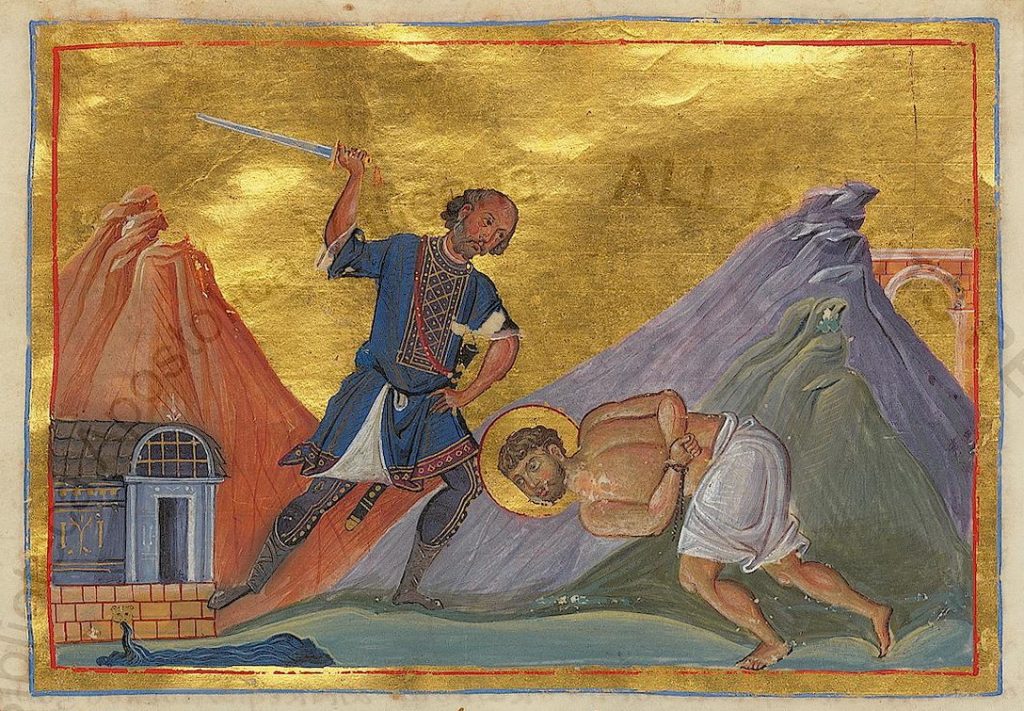
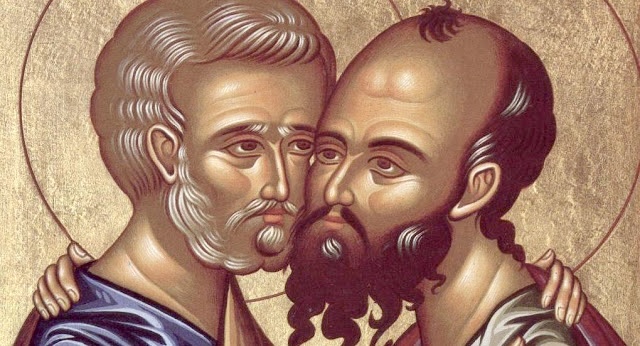 Ephesians 4:1-6: Brethren: I therefore, the prisoner of the Lord, beseech you that ye walk worthy of the vocation wherewith ye are called, With all lowliness and meekness, with long-suffering, forbearing one another in love; Endeavouring to keep the unity of the Spirit in the bond of peace. There is one body, and one Spirit, even as ye are called in one hope of your calling; One Lord, one faith, one baptism, One God and Father of all, who is above all, and through all, and in you all.
Ephesians 4:1-6: Brethren: I therefore, the prisoner of the Lord, beseech you that ye walk worthy of the vocation wherewith ye are called, With all lowliness and meekness, with long-suffering, forbearing one another in love; Endeavouring to keep the unity of the Spirit in the bond of peace. There is one body, and one Spirit, even as ye are called in one hope of your calling; One Lord, one faith, one baptism, One God and Father of all, who is above all, and through all, and in you all.
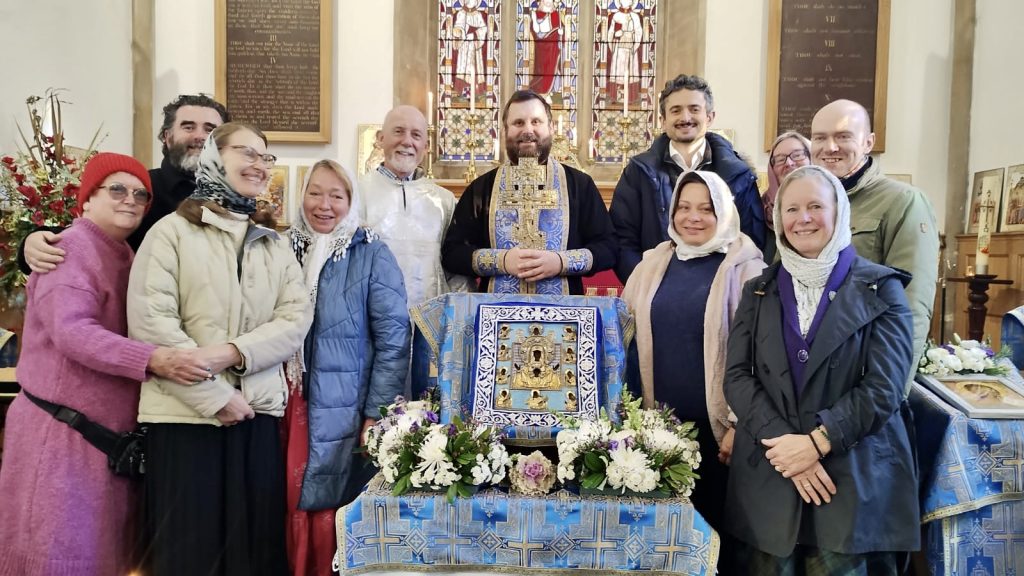 In the Name of the Father, and of the Son and of the Holy Spirit.
In the Name of the Father, and of the Son and of the Holy Spirit. In the Name of the Father, and of the Son, and of the Holy Spirit.
In the Name of the Father, and of the Son, and of the Holy Spirit.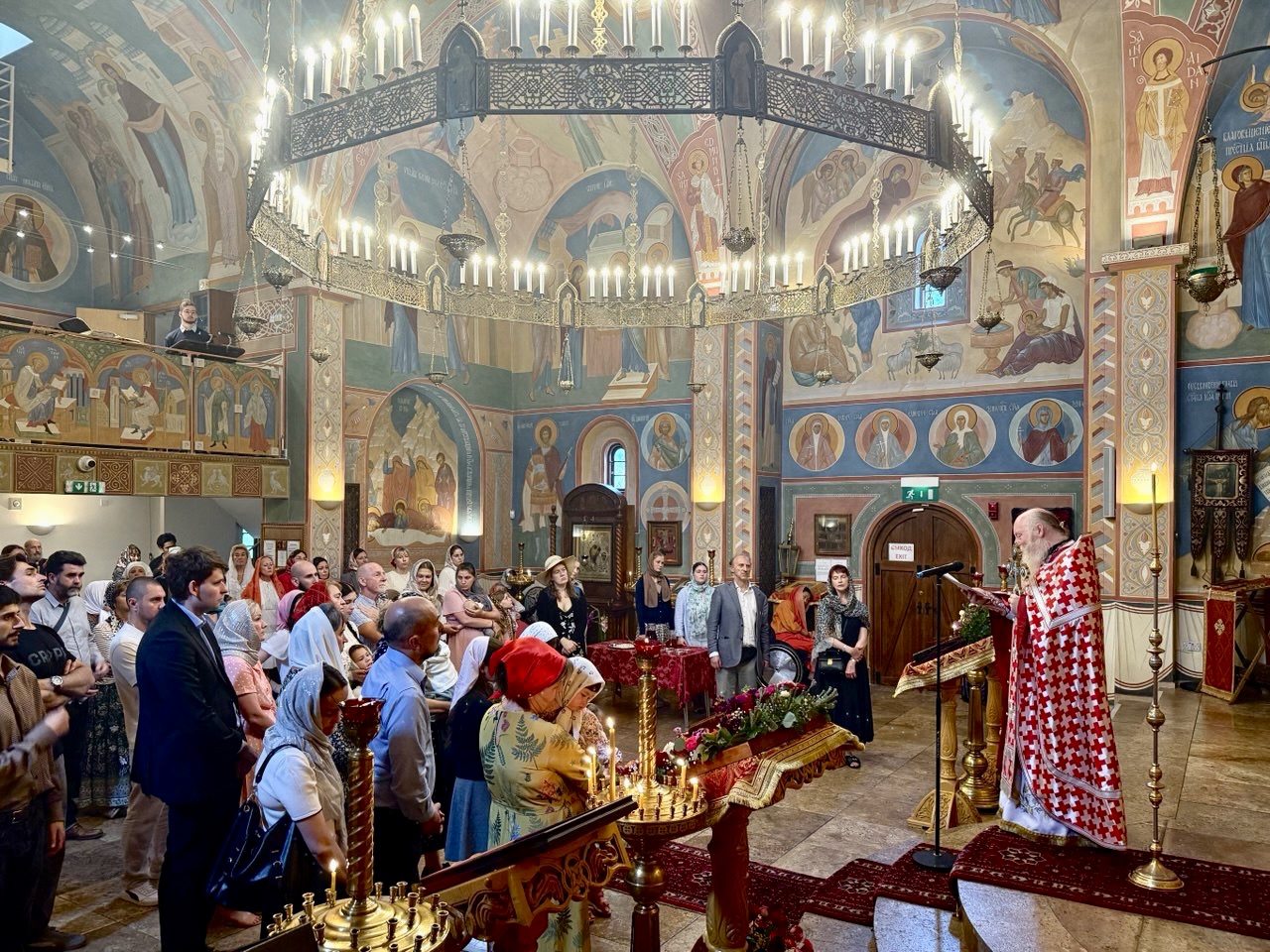

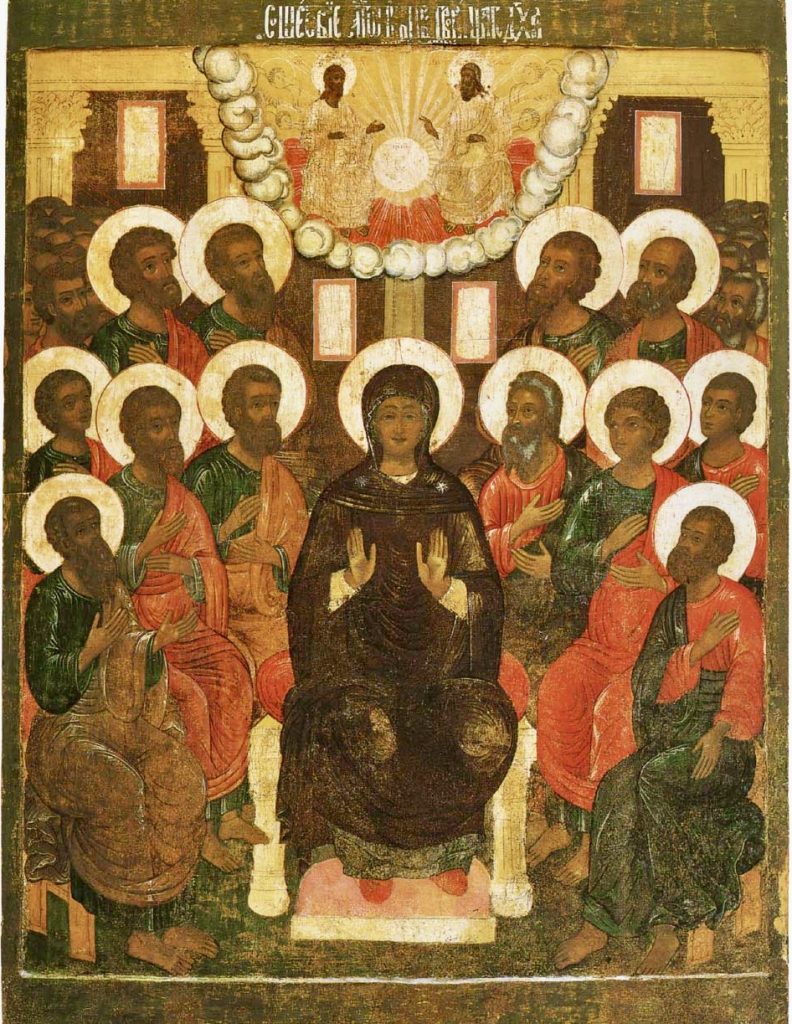
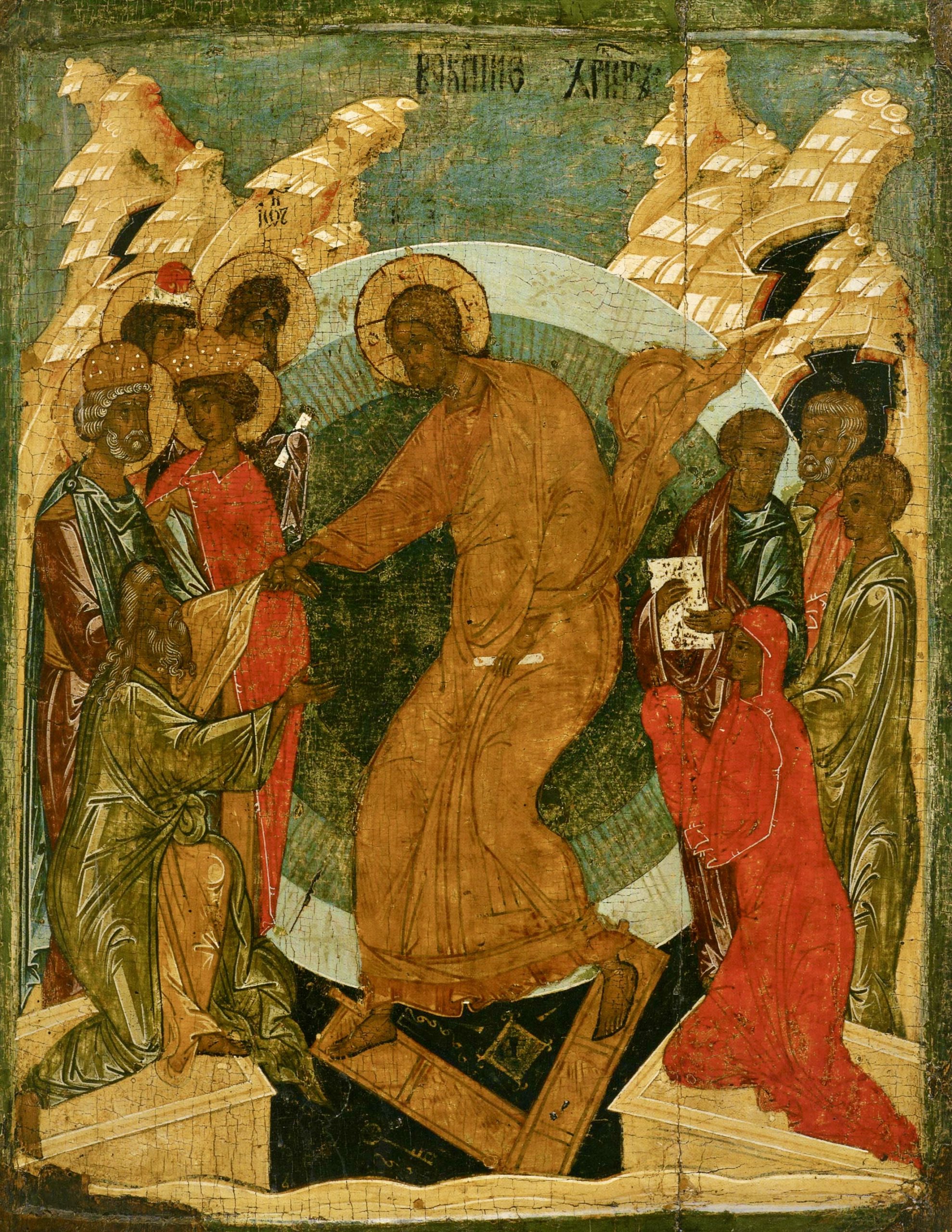 On the evening of that day, the first day of the week, the doors being locked where the disciples were for fear of the Jews, Jesus came and stood among them and said to them, “Peace be with you.” When he had said this, he showed them his hands and his side. Then the disciples were glad when they saw the Lord. Jesus said to them again, “Peace be with you. As the Father has sent me, even so I am sending you.” And when he had said this, he breathed on them and said to them, “Receive the Holy Spirit. If you forgive the sins of any, they are forgiven them; if you withhold forgiveness from any, it is withheld.”
On the evening of that day, the first day of the week, the doors being locked where the disciples were for fear of the Jews, Jesus came and stood among them and said to them, “Peace be with you.” When he had said this, he showed them his hands and his side. Then the disciples were glad when they saw the Lord. Jesus said to them again, “Peace be with you. As the Father has sent me, even so I am sending you.” And when he had said this, he breathed on them and said to them, “Receive the Holy Spirit. If you forgive the sins of any, they are forgiven them; if you withhold forgiveness from any, it is withheld.” In the Name of the Father, and of the Son, and of the Holy Spirit.
In the Name of the Father, and of the Son, and of the Holy Spirit.